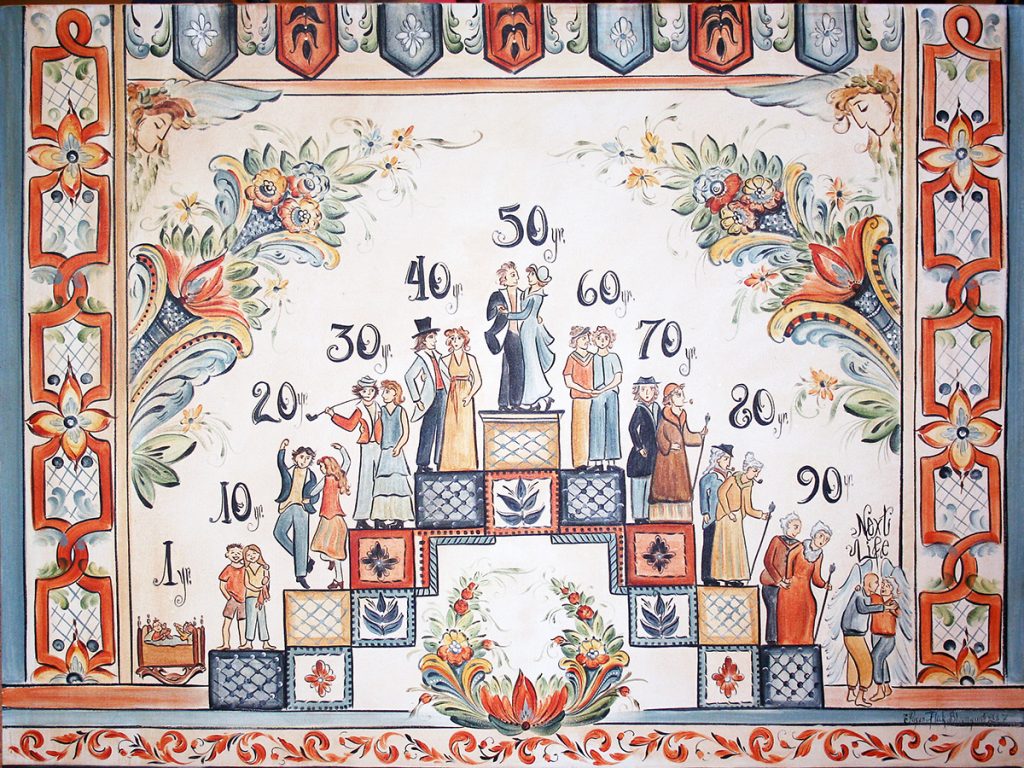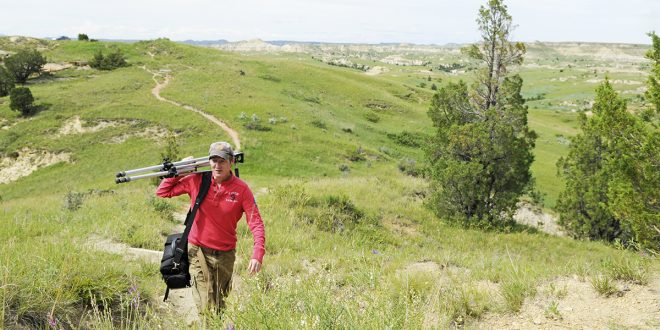Troyd Geist, state folklorist with the North Dakota Council on the Arts, thinks small community populations will stabilize in the future.
“While some of the really small towns may not grow, the next smaller town that was just next to it might grow and stabilize,” Geist said.
He’s seen some examples of this happening in North Dakota.
Geist thinks that using traditional arts can help rural communities be successful in the future to improve health and quality of life. He’s working on a project that brings folk artists, art agencies, elder health care facilities, and school children together to interact through art and culture.
“We utilize folk culture, folk art to improve the emotional and physical health of people,” he said.
One example of this work includes a traditional dala painter, Pieper Bloomquist, whose paintings narrate important events in the life of an individual or through the history of a community. Bloomquist worked with the residents of an elder care facility to create paintings based on childhood memories. Paintings were hung outside each of their doors. One case, of a man with dementia who often couldn’t find his room, created surprising results.

This is an example of a dala painting that can depict important events in the life of an individual or a community. Contributed photo
“When this man would leave, he would still sometimes get lost, but when he walked, he always recognized that painting as his. It gave this man his sense of independence back. It gave his dignity back. This is the power of the folk traditions we have in our state, when we use them in a very conscious, focused way to improve the lives of our elders,” said Geist.
Geist said that communities can add to their future success by thinking outside the box and considering how traditional culture can improve local health. He said there’s an assumption that folk arts are dying out, but he is witnessing the opposite.
“Our folk traditions and our folk artists are increasing. We have some amazing young people that are learning some very old traditions and are starting to grow with them,” he said.
Both North and South Dakota are encouraging growth in these fields through a folk arts and traditional arts apprenticeship program that are helping youth learn traditional arts.
Geist is contributing to the effort. He is working on a toolkit for arts agencies and elderly care facilities to use and will be sending it to all agencies in the fall of 2017.
 Dakotafire Get your spark here.
Dakotafire Get your spark here.



